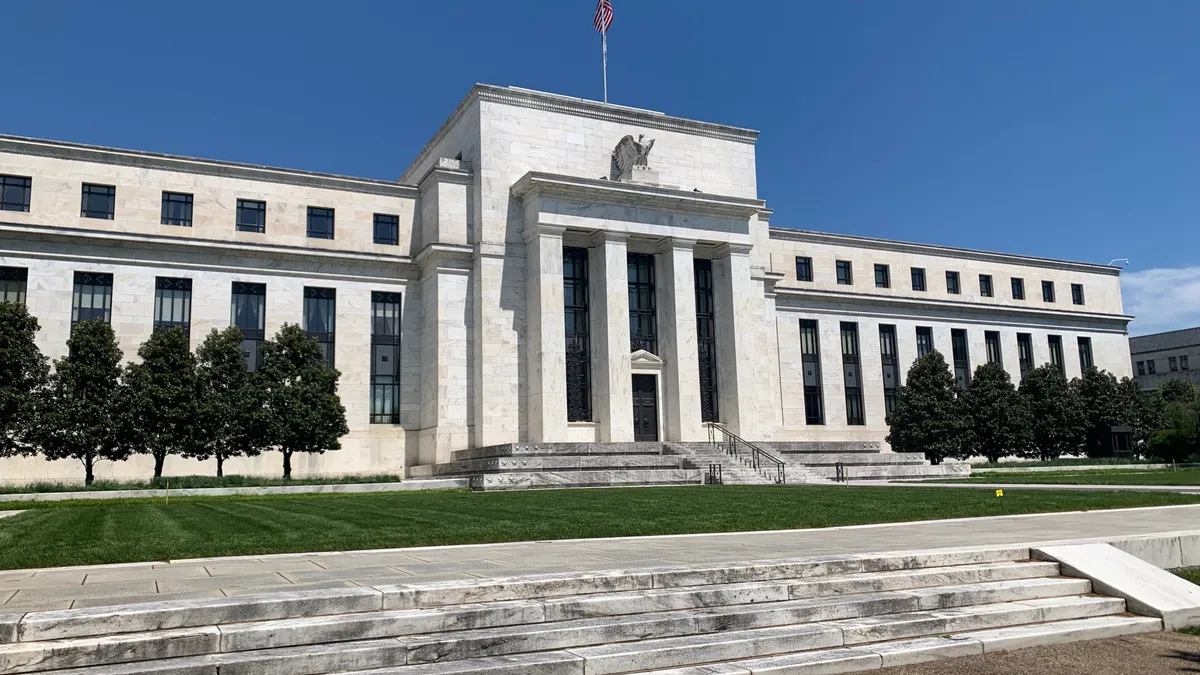UPDATE: Feb. 10, 2021: The Federal Reserve's Main Street Lending Program ended last month, having tapped just 3% of its potential, according to data the central bank released Tuesday.
The program, which launched in June, lent out $17.5 billion of the $600 billion it made available to businesses with up to 15,000 employees or $5 billion in revenue, according to Bloomberg. That figure incorporates $16.6 billion in loans the Fed purchased, accounting for 95% of the total, according to guidelines that left banks on the hook for the remaining 5%.
Former Treasury Secretary Steven Mnuchin moved in November to wind down the program Dec. 31, but a swell in activity — more than two-thirds of the program's loans were processed in November and December — gave Main Street an extension through Jan. 8.
Dive Brief:
-
The Federal Reserve said last week it would extend the termination date of the Main Street Lending Program by eight days to Jan. 8.
-
The extension of the program, which was set to expire Dec. 31, will allow the central bank more time to process and fund loans that were submitted to the Main Street lender portal on or before Dec. 14, the Fed said in a statement.
-
The program saw a nearly threefold swell in activity in the four weeks preceding Dec. 23, according to Reuters. There were $14.59 billion in loans in the facility as of that date, compared with $5 billion in loans made during the program's first five months.
Dive Insight:
The Main Street Lending Program, which made $600 billion available in June, aimed to provide credit to small and midsize businesses struggling amid the coronavirus pandemic.
The program initially garnered lukewarm interest among banks and borrowers, with many calling the vehicle's terms too stringent and burdensome. But activity picked up after Treasury Secretary Steven Mnuchin announced in November the program would close Dec. 31.
"The fact that we've seen a spike in volume at this time highlights that there certainly was demand for many midsize firms and nonprofit organizations to use the facility under the terms that we already had," Eric Rosengren, president of the Federal Reserve Bank of Boston, which is overseeing program, told The Wall Street Journal last month.
The Fed tweaked the terms of the program several times to boost demand. The central bank bolstered its stake in the program's riskiest loans from 85% to 95%, and lowered the minimum loan threshold three times, ultimately to $100,000.
The Fed also extended the program to nonprofit groups in July.
Some analysts said Main Street's popularity lagged because eligible businesses could find assistance that didn't tie the lender to a 5% stake in the loans.
"If you needed a Main Street loan, many banks weren't going to give it to you, and if you could qualify for Main Street, you could probably get a bank loan," Hal Scott, a professor at Harvard Law School, told the Journal.
Still others surmised banks saw loan fatigue from another Fed facility whose loan terms were ever-changing between April and August.
"Coming off the heels of [the Paycheck Protection Program], it was too overwhelming to figure out a new program," Steve Sefton, president of Endeavor Bank in San Diego, told the Journal. Sefton said his bank closed more than 40 times as many PPP loans (856) as Main Street ones (20).














